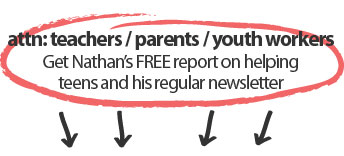Positive Emotions in Classroom Well-Being (PERMA Framework)
The first element of the PERMA model is one of the most obvious connections to happiness.
Being able to focus on positive emotions is more than just smiling, it is the ability to be optimistic and view the past, present, and future in a positive perspective.
This positive view of life can help you in relationships, work, and inspire you to be more creative and take more chances. In everyone’s life, there are highs and lows, focusing on the lows increase your chances of developing depression, therefore, you should focus on the high and positive aspects of life. There are also many health benefits to optimism and positivity.
Distinguishing between pleasure and enjoyment is important in this element of the model. Pleasure is connected to satisfying bodily needs for survival; such as thirst, hunger, and sleep. Whereas enjoyment comes from intellectual stimulation and creativity, for example when a child completes a complex lego car that requires his concentration, he will be beaming with joy and satisfaction from his work.
This type of positive emotion is needed, as when someone enjoys the tasks in their lives they are more likely to persevere and battle challenges through creative and alternative solutions.
Research suggests that the very act of reflecting on some of the good things that happen to us actually contributes to our wellbeing. By doing this we start to notice what goes right as well as wrong in our lives, changing our focus to the positive not the negative. Even on a bad day there are some good things that happen, however small. It is important that we accept it, learn from it and move on with a positive attitude.
I often talk to students about the power of FOCUS and how where the FOCUS goes, the energy flows.
Here are 3 practical classroom strategies to help develop habits of positive focus and enhance positive emotions:
3 Good Things + Gratitude Journalling
In workshops and on camps I teach students the power of focusing on 3 positive things which they have experienced during that day, or journalling about 3 things they have to be grateful for.
Developing a habit of gratitude and focusing on the positives helps students to shift their focus away from some of the more challenging or painful stuff they may be facing and bring into focus the positive elements of their life, no matter how small or meaningless they may seem.
Random Acts of Kindness
Research shows that being kind to others increases our own positive emotions and levels of wellbeing as well as the wellbeing of others.
Below are a few examples of acts of kindness:
- Give a compliment
- Hold a door open for someone
- Go and hang out with someone who’s sitting on their own
- Make someone laugh
- Take time to really listen to someone
- Tell someone if you notice they’re doing a good job
- Get back in contact with someone you’ve lost touch with
- Volunteer your time for a charity
- Show your appreciation
Expressed Gratitude + Thanks
The expression of gratitude can be particularly effective when done directly – by phone, letter, or face-to-face – to another person.
Expressing gratitude and thanks to others is another powerful strategy we teach in workshops and on camps, where we have students write a letter to someone who they want to express gratitude and thanks to. Perhaps it’s their mum, favorite uncle, or old friend; perhaps it’s an old coach, teacher, or supervisor.
We have the students write a letter expressing their gratitude and thanks and where appropriate expressing in detail what he or she did for the student and exactly how it affected their life. Some people find it uplifting to write gratitude letters to individuals whom they don’t know personally but who have influenced their lives (such as authors or politicians) or made their lives easier (such as their postal carriers or bus drivers).
Where appropriate we then send those letters to the person (on behalf of the student).
Another way for students to express gratitude is through peer recognition, or peer voted awards.
Studies tell us that one of the most powerful ways to motivate teenagers is through peer recognition.
Peer recognition for positive behaviour is hugely powerful motivator.
Having students vote and publicly recognise other students for – positive behaviour, upholding classroom values, positive contribution etc is a fantastic way to enhance classroom well-being.
Helping students to develop habits and strategies to enhance their positive emotions is a key piece to the well-being puzzle.
In the next article we will be looking at the power of positive relationships in enhancing well-being in young people.

